Moss grows naturally in damp environments, carpeting forest floors and covering decaying tree stumps and boulders in a rich layer of green velvet. Its presence evokes a sense of tranquility, and it is so tempting to touch that I want to walk barefoot just to feel the cool softness between my toes.
In garden design moss is popular between pavers, flagstones and bricks, on patios and pathways, softening the edges and providing a permeable alternative to mortar. It is also gaining popularity in some areas as a lawn alternative.
Perhaps its greatest attribute is its ability to add a sense of age and permanence to a garden. Moss-covered statues in a newer garden suggests a history, while in a well-established landscape, they add an air of grace and beauty. They form a connection to nature that appears to have taken decades to evolve, yet the time it takes can be deceptively short.
Here are some easy ways that you can use moss-covered artifacts in your garden and jump-start your own garden history.
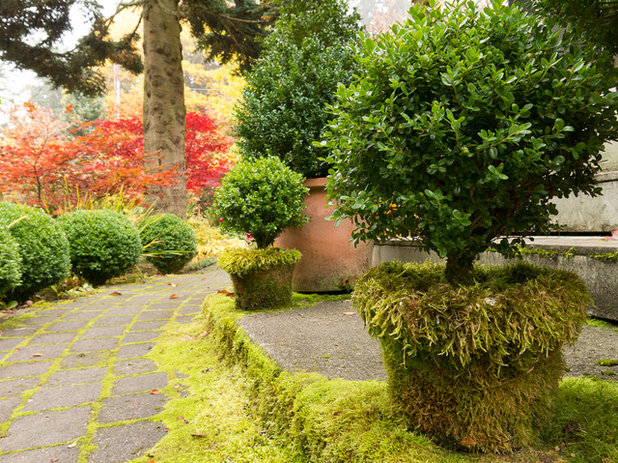
Le jardinet
Planters. A thick layer of velvety moss completely shrouds these plant pots and offers a wonderful counterpoint to the stiff lines of the clipped topiary.
Over years the moss has spilled over the steps onto the meandering pathway, literally connecting the planter to the landscape. Moss suggests a sense of permanence in a way that few other plants can.
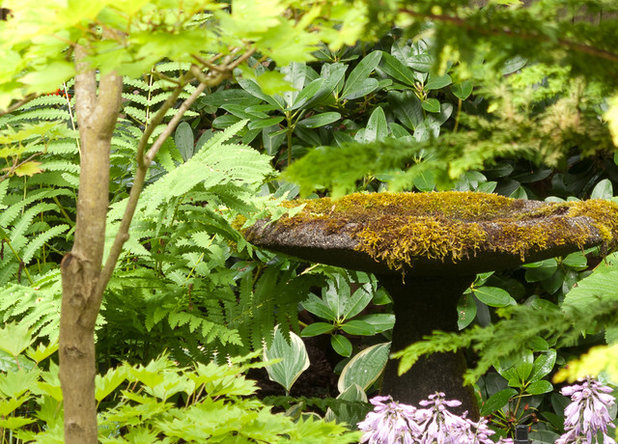
Le jardinet
Birdbaths. Tucked away in a shady nook, this simple birdbath is perfectly nestled in a dense planting of ferns and hostas. Is it an antique piece or a more recent introduction? The secret is safe, thanks to the mossy disguise.
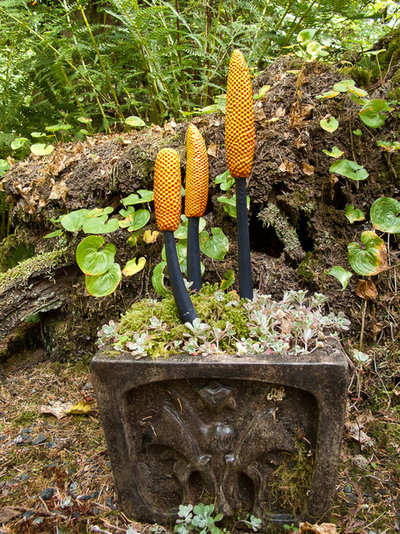
Le jardinet
Highlighting contemporary art. Artist Robert Fairfax crafts these resin “flame pods” at his studio in Snohomish, Washington. They bear a striking resemblance to the berried stems of Italian lords and ladies (
Arum italicum), especially when placed in a woodland environment that mimics their natural habitat.
The bold splash of color catches visitors by surprise. The juxtaposition of contemporary art and a weathered, mossy container makes the sculptures all the more eye catching.
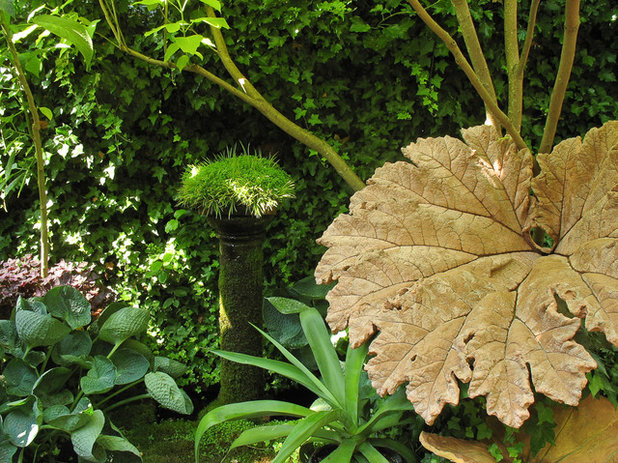
Le jardinet
Creating a fantasy. Internationally renowned artists George Little and David Lewis are known for their concrete sculptures that evoke a sense of ancient times.
Tall Grecian-inspired columns are one of their most popular designs. When placed in a shallow pool of water and surrounded by lush foliage, as shown here, they quickly develop a layer of moss in the damp atmosphere, adding to the magical fantasy of discovering an ancient ruin.
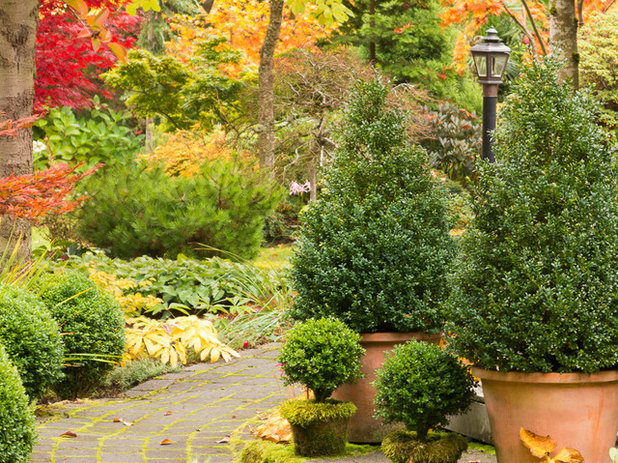
Le jardinet
Moss smoothie. If you are impatient for nature to take its course, you can easily kick-start a moss culture with one of these two recipes, which are said to work equally well.
For best results, use native moss and apply when evaporation is low (that is, in spring or fall).
- Yogurt base: Blend several handfuls of native moss with a large carton of plain yogurt. Slowly add buttermilk to form a slurry.
- Beer base: Blend several handfuls of native moss with 12 ounces of beer plus 1 teaspoon of granulated sugar to form a slurry.
With either blend, brush the mix onto the desired surface and spritz daily with water until it becomes established.
Conditions needed:- Morning sun or all-day filtered sun
- Damp or humid atmosphere





